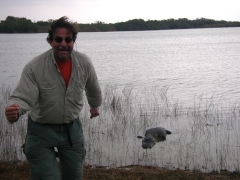 I’m back. Back from a great trip down south, to the Everglades and other places in southwest Florida. Good times with good friends Dale Linder, Dave Skok and Jamie Boyle.
I’m back. Back from a great trip down south, to the Everglades and other places in southwest Florida. Good times with good friends Dale Linder, Dave Skok and Jamie Boyle.
Dale and I began in Florida City, fishing the Aerojet canal on the edge of the Everglades Wilderness area for peacock bass, largemouth bass, oscars, and mayan cichlids and whatever else we could catch. It took us a while to figure out some of the best places and techniques but we eventually did and did as well as we could while just walking the shoreline. Dave and Jamie fished up around Fort Lauderdale and then joined us the next evening in Florida City.
The following day we all rented canoes from the Everglades Youth Hostel and headed off for Flamingo, where the plan was to fish both the bay side and the back country. When we got to the water, however, the bay side looked really discolored and the wind was picking up so Dale and I chose not to paddle the five or six miles to the beachside camp with Dave and Jamie–and two friends who had joined them–but to set up our tents in the campground and wait and see what the weather was going to do (a cold front with heavy winds was predicted for the next day) and do a short paddle up into Coot Bay, where my friend Tim Borski had told us there were usually a lot of tarpon and snook to be found. Maybe so but not when we got there; the water was very discolored and the wind was strong and the fish had gone elsewhere. Couldn’t say that I blamed them.
Knowing when to fold ’em, we headed back early, about two hours before sunset, and decided to check out a pond that we had passed on our way in to Flamingo. It was called Sweetbay Pond on the map and was about fifteen miles from our campground and a short walk in from the road. A really lovely pond it was, too, ringed with reeds and mangroves with water as clear as could be with flat limestone all along the edges, which made for relatively easy wading. And not too many alligators either.At the end of the path, almost as soon as I reached the water’s edge, I could see fish moving in the shallows. Most of them were small bass but a few were larger. I had been eager to try out a new fly, one of the most unusual I’ve ever tied, one I now call a Mystery Gurgler, and quickly tied it on.
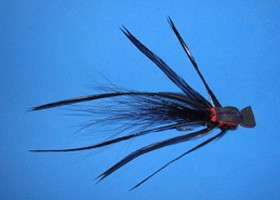
The water here–indeed all along the shoreline– dropped off quite steeply and so I cast the fly parallel to the shoreline along the drop-off. The fly had hardly settled before I was into a lovely 3-pound largemouth.
And a few minutes later another. The fly was too large to be taken by the smaller bass and oscars but that didn’t stop them from hitting it. I was quite pleased with myself–the fly actually worked. And worked well. Well, so far anyway. It takes more than a few fish to prove the worth of a new fly.
The sun was setting fast now so I worked my way quickly along the bank, trying to cover as much water as I could before dark, and picked up several more bass in the 2-3 pound range as well as a large oscar (my first of the trip). Altogether a wonderful evening. I could hardly wait to return.
Later that night the cold front moved in with a vengeance, bringing with it high winds (20-30 mph) and a nighttime temperature of 41 degrees. Not the Florida I had bargained for and I was glad that I had brought my down jacket with me. This cold front stayed with us for most of the rest of the trip and, as you might imagine, had an adverse effect on the fishing, at least the shallow-water fishing, driving all the redfish, snook, and tarpon off into the deeper, warmer water of the bay and also, lucky for us, into the warmer, deeper waters around the Flamingo Marina, where fishing was allowed when the lights were turned on. I’ve always loved night-fishing under the lights and so I wasn’t overly disappointed by the change of weather. That night then, after downing some canned chili at the campground, we set off for the marina and for about an hour or so had some pretty good action, landing tarpon (1), jacks (5), and snook (3) until the fishing slowed and it became too cold to just hang around and wait for the action to pick up. Time to head back to camp and the warmth of a sleeping bag and some pleasant dreams.
We awoke around 5 am, made some coffee, and headed back to the marina, anticipating fast action in the early dark hours of morning, but all the fish, it seemed, had cleared out. All but one small tarpon that poked its head out of the water, shivered a bit, and then swam off to find warmer water. We did the same and headed for the marina store, which was just opening, for some fresh, hot coffee and a tasty microwaved bacon cheeseburger. Yum!
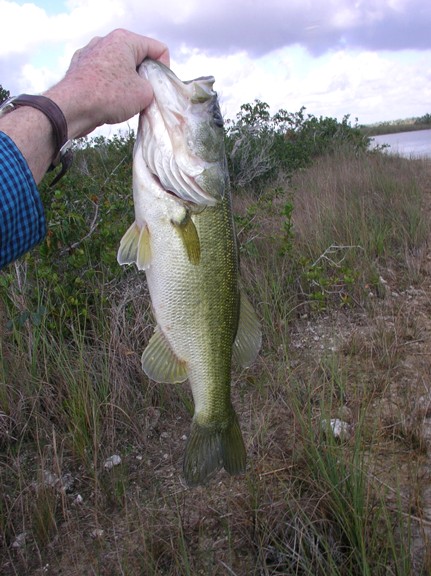 Warmed by the coffee and the rising sun, we set off again for Sweetbay Pond, eager to explore it further and sure that the fishing would be as good as it was the night before. It wasn’t. The cold had moved all the fish away from the shallows into the deeper water and the catching was difficult. Not impossible, just difficult, with fast- and deep-sinking flies needed to get down to the depths. I’m not fond of fishing deep–I find it a bit boring–and didn’t enjoy the fishing as much as I had the night before but at least it gave me the opportunity to try out some new fast-sinking flies that I tied up before the trip and I was quite pleased when they worked, attracting bass up to around four pounds.
Warmed by the coffee and the rising sun, we set off again for Sweetbay Pond, eager to explore it further and sure that the fishing would be as good as it was the night before. It wasn’t. The cold had moved all the fish away from the shallows into the deeper water and the catching was difficult. Not impossible, just difficult, with fast- and deep-sinking flies needed to get down to the depths. I’m not fond of fishing deep–I find it a bit boring–and didn’t enjoy the fishing as much as I had the night before but at least it gave me the opportunity to try out some new fast-sinking flies that I tied up before the trip and I was quite pleased when they worked, attracting bass up to around four pounds.
The rest of our time in Flamingo was spent dodging weather: rain, wind, and cool temperatures. Dave and Jamie and their two friends were more optimistic about–or less daunted by–the weather and headed off for the back country in their canoes. Dale and I decided not to join them but to remain in the campground and explore bass ponds during the day and night-fishing at the marina, but always at some time during the day we returned to Sweetbay Pond, where we could further our explorations and count on catching at least some fish while at the same time learning to feel more comfortable–but cautious–around alligators and poisonous snakes, which are quite abundant in the area. Alligators, as it turned out, proved to be generally much more wary of us than we of them and usually moved off as we approached (except for one curious one that swam quickly towards me as I was wading the shoreline; I backed off just as quickly and the alligator stopped). As time went on we learned that the presence of alligators proved to be a reliable indicator of the presence of fish; lots of alligators, lots of fish; no alligators, no (or few) fish. We then began to look for bodies of water with lots of alligators.
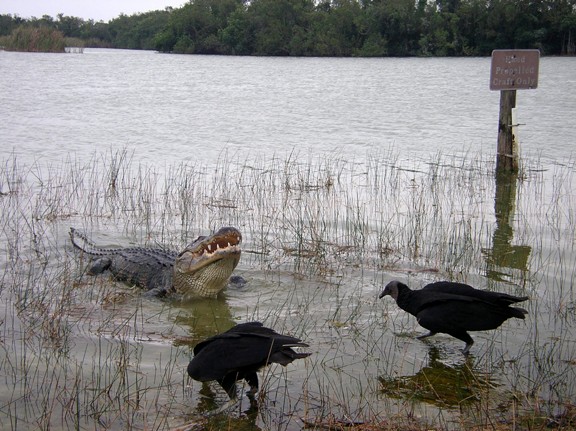
One such place was 9 Mile Pond, about halfway between our campground and Sweetbay Pond. If there was one alligator there there were fifty; like logjams in some places. But, alas, we missed the best time for fishing (which was just before we arrived, according to two guys who were pulling out their canoe as we arrived) and then it started to rain. Again. We sat out the short rain squall under a small shelter and then headed off in our canoes across the pond to some smaller bays that were supposed to hold a lot of bass (lots of alligators, too). After many casts in and along the mangroves and other fishy-looking spots but with no hits to show for them we headed back to shore. There we met the two guys who had done so well earlier in the morning and had gone back out at about the same time we did and they related similar luck. No fish. It had turned completely off. Ah, well, there’s always tomorrow, we thought, as we hauled the canoe out of the water and flipped it onto the roof of the rental SUV and headed on up the road Sweetbay Pond, which had now become our go-to spot when all else failed. A good choice, too, since the water had warmed up a bit by now and the bass were a bit more active than the night before, especially in the shallows, where they hit Gurglers with a satisfying frequency.
After a few more days int he Flamingo area, and getting to know it better each day, we were reluctant to leave but we had a plan to fish a guide friend of mine out of Key Largo so Dale and I drove down the day before to Homestead to return the canoes and to fish one last evening at the Aeroject Canal. The wind was still high so we paddled only about a mile from the road before beaching the canoe to wade the shoreline, where we had great fun catching peacock bass (again on the Mystery Gurgler) as well as Oscars and Mayan Cichlids and a few largemouth bass. Also learned to give a wide berth to a very large alligator that seemed to make its home fairly near where the fishing was best.
We stayed that night at the Everglades Hostel, which I really recommend if you’re into time-tripping. It’s right out of the sixties–and only twenty bucks a night if you stay in the dormitory.
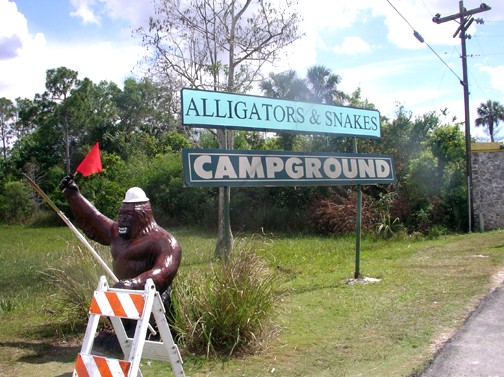 I called my friend down in Key Largo but he told me it wasn’t worth coming down. The fishing, which had been so good just a few days ago had really slowed down with the cold front. A familiar story, so Dale and I headed off in the morning for Everglades City, fishing the canal along Route 41 at different spots and picking up largemouth bass and small snook along the way.
I called my friend down in Key Largo but he told me it wasn’t worth coming down. The fishing, which had been so good just a few days ago had really slowed down with the cold front. A familiar story, so Dale and I headed off in the morning for Everglades City, fishing the canal along Route 41 at different spots and picking up largemouth bass and small snook along the way.
Outside Everglades City we found a campground, which was also the home of the Skunk-Ape Research Center (check this out on the internet, really interesting if you like hokum).
My friend Bruce Bauman had given me a list of places to fish around EC and we were eager to check them out. It was good advice, as it turned out, because we found fish in all the places he’d recommended. All but one: the East River, which he described as a small lake with mangrove islands in the middle surrounded by tarpon and snook. A good description except for the last part; the cold front had moved the tarpon and snook out of here as well. We should have known; there wasn’t an alligator in sight. Still and all we had great fishing for snook and small tarpon along the Route 41 canal as well as the canal that ran along the old part of Route 41. As you can see from the photos, there’s a lot of fish-holding structure here.
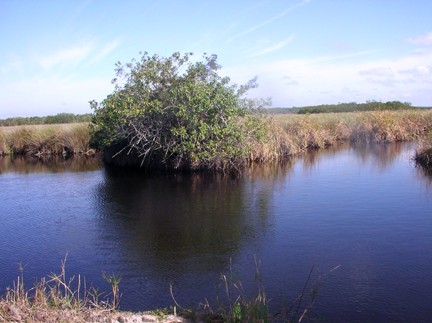
One of the most important things that we learned here was that the canals are all tidal and that the best fishing was when the tide was in, almost a waste of time when the water was low and murky. As you might suspect, the fish were most active in the early morning and late afternoon.
With two days left in the trip, we drove up to Sanibel, where, on the recommendation of local expert Joe Mahler, we fished the Ding Darling Refuge in the evening for snook. Another contact, Norm Zeigler, at the Bait Shack in Sanibel, had recommended fishing the Ladyfish Hole and that’s what we did. And appropriately named it was, since it was difficult to NOT catch a ladyfish on just about every cast (Soft Hackle Streamers worked best). Ladyfish are a lot of fun, especially on a light rod, but almost as much fun (?) was trying to land them before a very aggressive quartet of young raccoons tried to take them off your line. These raccoons were very clever; they would watch you cast, follow every movement of your retrieve, and then when the road bent with a fish or there was a splash, they would run down to the water’s edge and then try to grab it before you could reach down and release it. I quickly learned to flip the fish out of the water and off to one side before the coons could get it. Despite my best efforts, they managed to get three away from me. They’re awfully fast little critters. Or is it that I was too slow?
In between fighting ladyfish and raccoons I did manage to land a few snook (between 18″-22″) and had a huge one on that took me across the lagoon into the bushes and broke me off. The best fly for snook, by the way–and by far–was a small realistic Snook Minnow tied on a # 2 hook. Seems all the snook were focused on small young-of-the-year fry and wouldn’t look at a larger fly.
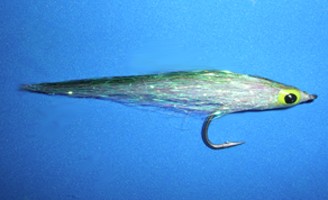
The last day of our adventure was spent in Fort Myers, where we were lucky enough to get box seats to a Red Sox spring training game between the Sox and the Pirates. I had always wanted to attend a spring training game and it was a real thrill to be able to; the City of Palms Park is a lovely place for a ball game.
After the game we headed back to Miami and fished for an hour or so along Alligator Alley where I caught a nice largemouth just before dark on a Mystery Gurgler. The last fish of the trip.
All in all, it was a great trip and I’m itching to go back sometime when the weather is a bit more stable. Until then, I’ve got to catch up on my flytying and fill the orders that have come in while I was away–and also to make plans for the next trip. Stay tuned.
 As a follow-up to Jack’s post about credit cards, here are a few other new additions to the web site. Hopefully this will be the last post of this type for awhile–we need to stop coding and get to fishing! But if nothing else it gives us a chance to post another picture of a sexy girl in a French maid outfit. 🙂
As a follow-up to Jack’s post about credit cards, here are a few other new additions to the web site. Hopefully this will be the last post of this type for awhile–we need to stop coding and get to fishing! But if nothing else it gives us a chance to post another picture of a sexy girl in a French maid outfit. 🙂 By popular demand–and due to the diligent and exceptional efforts of my webmaster Mike Quigley–I’m now accepting credit cards. This is a big step forward for me, and an exciting one, since it makes ordering a lot easier for my customers (and hopefully gives my little business a boost as well).
By popular demand–and due to the diligent and exceptional efforts of my webmaster Mike Quigley–I’m now accepting credit cards. This is a big step forward for me, and an exciting one, since it makes ordering a lot easier for my customers (and hopefully gives my little business a boost as well). Just taking a break from writing up my newsletter for April. In it I try to answer some of the more frequently asked questions that have been put to me over the years. Since many of my blog-readers may not receive the monthly fly fishing newsletter, I thought I’d post the questions and answers here as well. If you’d like to receive a newsletter, by the way, please sign up for it on the
Just taking a break from writing up my newsletter for April. In it I try to answer some of the more frequently asked questions that have been put to me over the years. Since many of my blog-readers may not receive the monthly fly fishing newsletter, I thought I’d post the questions and answers here as well. If you’d like to receive a newsletter, by the way, please sign up for it on the 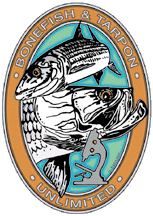 If you’re a tarpon or bonefisherman, you’ll want to learn more about Bonefish & Tarpon Unlimited, a group doing important work with these species and whose research and activities I wholeheartedly support–and urge you to support as well.
If you’re a tarpon or bonefisherman, you’ll want to learn more about Bonefish & Tarpon Unlimited, a group doing important work with these species and whose research and activities I wholeheartedly support–and urge you to support as well. As part of an afternoon-evening program/dinner, I’ll be giving a short talk on successful and unusual fishing tactics at the Greater Boston Trout Unlimited Pasta Fest on Sunday, April 6, 2008. This event is open to everybody. If you’re interested in having a good time and supporting the work of Trout Unlimited, come on by. You’re sure to have fun. I’m trying to convince my giraffe, Gerald, to come out of hibernation for the event (I know he loves pasta) but he’s been looking a little tired lately so I’m not sure he’ll be able to make it.
As part of an afternoon-evening program/dinner, I’ll be giving a short talk on successful and unusual fishing tactics at the Greater Boston Trout Unlimited Pasta Fest on Sunday, April 6, 2008. This event is open to everybody. If you’re interested in having a good time and supporting the work of Trout Unlimited, come on by. You’re sure to have fun. I’m trying to convince my giraffe, Gerald, to come out of hibernation for the event (I know he loves pasta) but he’s been looking a little tired lately so I’m not sure he’ll be able to make it.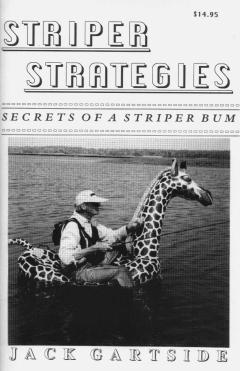 In between tying flies and filling orders this past month I’ve been busily working on revising and rewriting Striper Strategies, which has been out of print now for almost a year. It’s been over ten years since the first printing and, judging from many readers’ requests, it’s time to bring it back.
In between tying flies and filling orders this past month I’ve been busily working on revising and rewriting Striper Strategies, which has been out of print now for almost a year. It’s been over ten years since the first printing and, judging from many readers’ requests, it’s time to bring it back.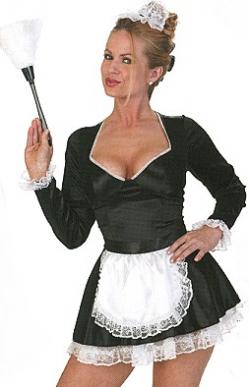 Ah Spring. The ice is melting, the winds are howling, the streams are streaming. Jack and I have been hard at work making some fundamental changes to the site. Hopefully most of these changes will be transparent to you (because they’re supposed to be). One thing we did was switch hosting companies. Goodbye Earthlink after seven years, hello Lunar Pages. Earthlink was an OK host–but just OK (lately their servers had gotten really slow). We also upgraded a lot of software that runs things on the site, from the mailing list to the pointless poll. Should you care about any of this? Well….probably, nah.
Ah Spring. The ice is melting, the winds are howling, the streams are streaming. Jack and I have been hard at work making some fundamental changes to the site. Hopefully most of these changes will be transparent to you (because they’re supposed to be). One thing we did was switch hosting companies. Goodbye Earthlink after seven years, hello Lunar Pages. Earthlink was an OK host–but just OK (lately their servers had gotten really slow). We also upgraded a lot of software that runs things on the site, from the mailing list to the pointless poll. Should you care about any of this? Well….probably, nah. I’m back. Back from a great trip down south, to the Everglades and other places in southwest Florida. Good times with good friends Dale Linder, Dave Skok and Jamie Boyle.
I’m back. Back from a great trip down south, to the Everglades and other places in southwest Florida. Good times with good friends Dale Linder, Dave Skok and Jamie Boyle.
 Warmed by the coffee and the rising sun, we set off again for Sweetbay Pond, eager to explore it further and sure that the fishing would be as good as it was the night before. It wasn’t. The cold had moved all the fish away from the shallows into the deeper water and the catching was difficult. Not impossible, just difficult, with fast- and deep-sinking flies needed to get down to the depths. I’m not fond of fishing deep–I find it a bit boring–and didn’t enjoy the fishing as much as I had the night before but at least it gave me the opportunity to try out some new fast-sinking flies that I tied up before the trip and I was quite pleased when they worked, attracting bass up to around four pounds.
Warmed by the coffee and the rising sun, we set off again for Sweetbay Pond, eager to explore it further and sure that the fishing would be as good as it was the night before. It wasn’t. The cold had moved all the fish away from the shallows into the deeper water and the catching was difficult. Not impossible, just difficult, with fast- and deep-sinking flies needed to get down to the depths. I’m not fond of fishing deep–I find it a bit boring–and didn’t enjoy the fishing as much as I had the night before but at least it gave me the opportunity to try out some new fast-sinking flies that I tied up before the trip and I was quite pleased when they worked, attracting bass up to around four pounds.
 I called my friend down in Key Largo but he told me it wasn’t worth coming down. The fishing, which had been so good just a few days ago had really slowed down with the cold front. A familiar story, so Dale and I headed off in the morning for Everglades City, fishing the canal along Route 41 at different spots and picking up largemouth bass and small snook along the way.
I called my friend down in Key Largo but he told me it wasn’t worth coming down. The fishing, which had been so good just a few days ago had really slowed down with the cold front. A familiar story, so Dale and I headed off in the morning for Everglades City, fishing the canal along Route 41 at different spots and picking up largemouth bass and small snook along the way.

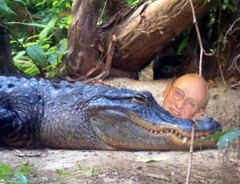 Jack took off for Florida yesterday on a float trip of the Everglades, traveling with Dale Linder, Jamie Boyle, and Dave Skok. I almost went too (though in the end I just couldn’t leave the lovely ice and snow that’s mantled our fair city of Boston this year). Before leaving Jack emailed me this photo, asking that I put it up on the blog. Sure thing, buddy.
Jack took off for Florida yesterday on a float trip of the Everglades, traveling with Dale Linder, Jamie Boyle, and Dave Skok. I almost went too (though in the end I just couldn’t leave the lovely ice and snow that’s mantled our fair city of Boston this year). Before leaving Jack emailed me this photo, asking that I put it up on the blog. Sure thing, buddy.